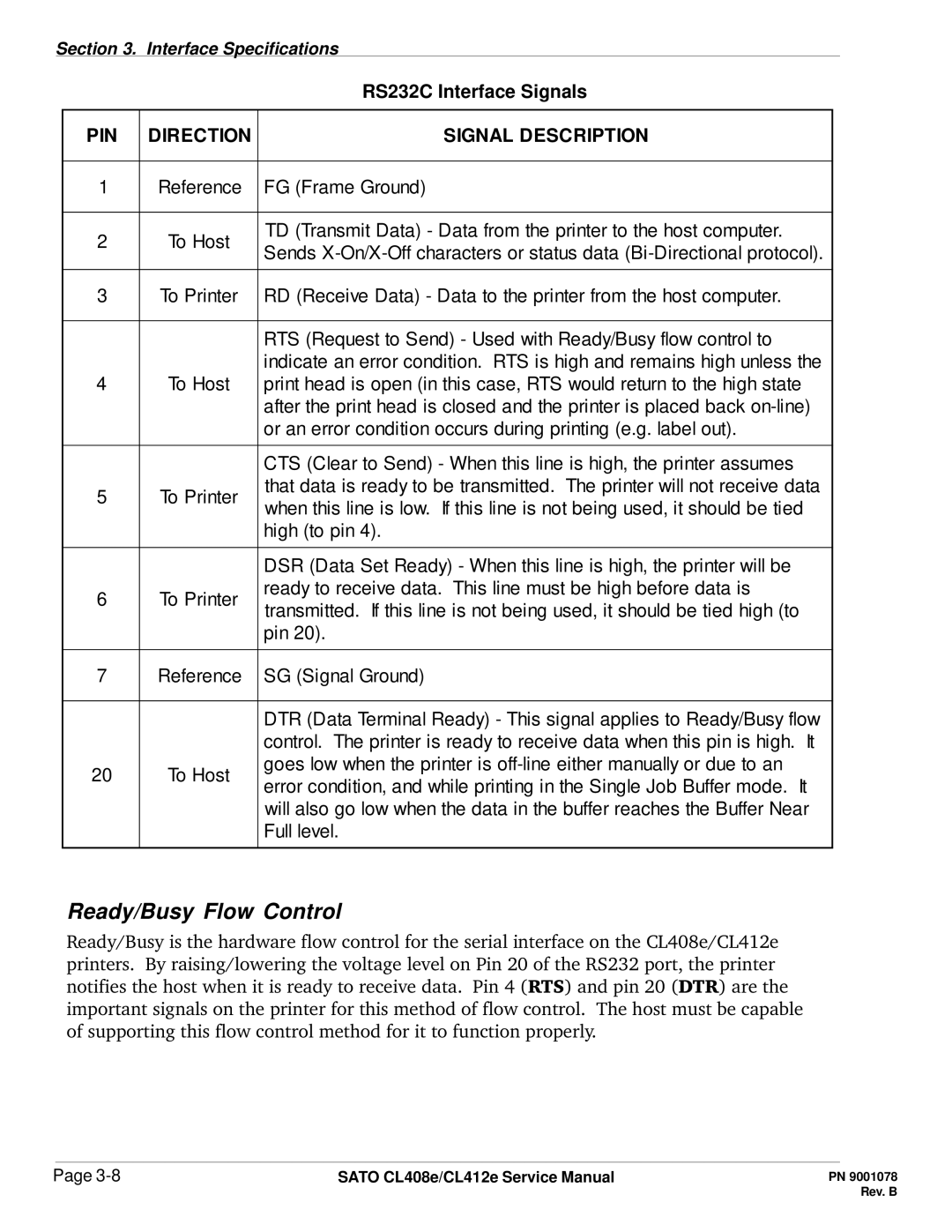
Section 3. Interface Specifications
|
|
| RS232C Interface Signals | ||
|
|
|
|
| |
PIN | DIRECTION |
|
| SIGNAL DESCRIPTION | |
|
|
| |||
1 | Reference | FG (Frame Ground) | |||
|
|
| |||
2 | To Host | TD (Transmit Data) - Data from the printer to the host computer. | |||
Sends | |||||
|
| ||||
|
|
| |||
3 | To Printer | RD (Receive Data) - Data to the printer from the host computer. | |||
|
|
| |||
|
| RTS (Request to Send) - Used with Ready/Busy flow control to | |||
|
| indicate an error condition. RTS is high and remains high unless the | |||
4 | To Host | print head is open (in this case, RTS would return to the high state | |||
|
| after the print head is closed and the printer is placed back | |||
|
| or an error condition occurs during printing (e.g. label out). | |||
|
|
| |||
|
| CTS (Clear to Send) - When this line is high, the printer assumes | |||
5 | To Printer | that data is ready to be transmitted. The printer will not receive data | |||
when this line is low. If this line is not being used, it should be tied | |||||
|
| ||||
|
| high (to pin 4). | |||
|
|
| |||
|
| DSR (Data Set Ready) - When this line is high, the printer will be | |||
6 | To Printer | ready to receive data. This line must be high before data is | |||
|
|
| |||
transmitted. | If this | line is not being used, it should be tied high (to | |||
|
| ||||
|
| pin 20). | |||
|
|
| |||
7 | Reference | SG (Signal Ground) | |||
|
|
| |||
|
| DTR (Data Terminal Ready) - This signal applies to Ready/Busy flow | |||
|
| control. The printer is ready to receive data when this pin is high. It | |||
20 | To Host | goes low when the printer is | |||
error condition, and while printing in the Single Job Buffer mode. It | |||||
|
| ||||
|
| will also go low when the data in the buffer reaches the Buffer Near | |||
|
| Full level. | |||
|
|
|
|
| |
Ready/Busy Flow Control
Ready/Busy is the hardware flow control for the serial interface on the CL408e/CL412e printers. By raising/lowering the voltage level on Pin 20 of the RS232 port, the printer notifies the host when it is ready to receive data. Pin 4 (RTS) and pin 20 (DTR) are the important signals on the printer for this method of flow control. The host must be capable of supporting this flow control method for it to function properly.
Page | SATO CL408e/CL412e Service Manual |
